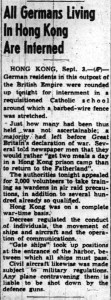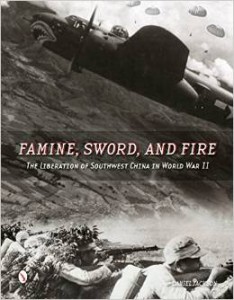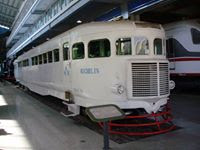Posted: October 6th, 2015 | 1 Comment »
Meant to post this in September but forgot!! Anyway, September 1939 and all Germans living in Hong Kong were interned – put in a Catholic School and surrounded with barbed-wire. The school was La Salle College on Prince Edward Road in Kowloon run by the Christian Brothers (the current site is a later building – the original, as in 1939, is far grander and shown below). The fact that the internees preferred their two squares a day in internment to being shipped back to Hitler’s Fatherland may be a bit of Brit propaganda but maybe not – sunny Hong Kong was probably preferable to Germany.
Hong Kong went on full war alert – much as the UK with Air Raid Wardens, Fire Marshals, beefing up protections around the harbour against sneak attacks and dealing with the possibility of air attack. The final battle was of course not to come until after Pearl Harbor in December 1941 and was, of course, against the Japanese rather than the Germans….


Posted: October 5th, 2015 | No Comments »
Daniel Jackson’s Famine, Sword and Fire deals with the American troops in Southwest China in WW2 – a group rather conspicuously absent from the recent Beijing 70th anniversary WW2 parade where apparently nobody fought with the Chinese!

The untold story of Chinese and Americans standing side-by-side, fighting together and dying together on the highest, most rugged battlegrounds of WWII. In May 1942, the Japanese 15th Army conquered Burma and southwest China. Only a desperate defense by disorganized and defeated Chinese troops and the war-weary remains of Claire Chennault’s mercenary Flying Tigers stopped the advance at the Salween River. For two years, the people of southwest China lived under an oppressive Japanese occupation while Generalissimo Chiang Kai-shek, President Franklin Roosevelt, General Joseph Stilwell, and Major General Claire Chennault bickered over what to do next. Finally, in May 1944, the Chinese Expeditionary Force, with American supplies and advisors, supported from above by the legendary 14th Air Force, crossed the Salween to take back what they had lost.
Posted: October 4th, 2015 | No Comments »
I just reviewed A Yi’s new China-set thriller A Perfect Crime at the Los Angeles Review of Books…with some references to previous Chinese literary giants…click here

Posted: October 3rd, 2015 | No Comments »
Japan attacked and occupied Peking in July 1937 – this picture from January 1938 is of a Japanese machine gun nest close to the city….

Posted: October 2nd, 2015 | 1 Comment »
Back when I edited Carl Crow’s wartime diaries (The Long Road Back to China) I came across this reference to the “Michelin” that ran from Kuming to Hanoi in those days. Crow describes it, as below from his diaries, but I was never quite sure what it looked like. My thanks to Andrew Hicks, editor of the Jack Jones’s memoir on the Friends Ambulance Unit China Convoy between 1945 and 1951, A True Friend to China, for this photo of the “Michelin”…
“Kunming-Hanoi, Monday, June 19th 1939. Everybody yesterday talked about how lucky I was to get a seat on the “Michelinâ€. It was partly luck but I wouldn’t have gotten the seat unless I had gone to the station personally and had a look myself at the seat plan and discovered those two vacant places. I was up at 5 o’clock and the dejeuner was very petit as it con- sisted only of bread, butter and coffee. They had told me the train would leave at 6:30 but I found out that it was the bus that was to leave at that time. Eigner went with me as he was going to Hanoi by the slow train that left a half hour later.
I didn’t know what the “Michelin†really was until I got aboard. It is a big motor bus that was on the railway tracks – about the size of a Greyhound bus at home, but not so comfortable. one thing that struck me especially was the tinted glass in the windows that not only kept out the glare but actually made the colors of the landscape more vivid. I would have been just as happy with a little glare and a little better upholstery but I wonder why railways at home have not adopted this kind of glass.”

Posted: October 1st, 2015 | 1 Comment »
I’ve blogged and written about the old Canidrome dog racing track (that hosted football and boxing as well as dog racing) in Shanghai’s Frenchtown before (numerously – just put “Canidrome” in the archive engine to your right). The Canidrome nightclub was round the corner as was the Hai-Alai Fronton. But there was dog racing in Shanghai before the Canidrome, at two tracks – Luna Park and Stadium. Luna Park, which opened in 1927, was financed by a largely British-backed company (as was Stadium) called Greyhound Racing Ltd whose board included the Shanghai Municipal Council Chairman H.E. Arnhold (old Shanghai didn’t really do “conflict of interest”!). It was popular – over 70,000 often attended the Saturday night races. Eventually Luna Park became a victim of a gambling crackdown in the Settlement and so the Canidrome became the “top dog” of the tracks (sorry!). There’s a significant back story involving corruption and gambling-criminal elements in Shanghai linked to the demise of Luna Park (and Stadium) and the rise of the Canidrome, but I’ll save that for another time. Here then…the dogs let loose….(the keen eyed will note the picture is by the famous Shanghai-based photographer Ah Fong).


Harry Arnhold
Posted: September 30th, 2015 | 3 Comments »
An interesting possible alternative history of the naval war in the Pacific offers itself from Paul Willetts’s new book Rendezvous at the Russian Tea Rooms (which I will get round to reviewing in full in another place soon), about the Tyler Kent affair in early World War Two. I’ve blogged about the China-born Kent before here briefly.

Kent, working in the US Embassy in London in 1940, stole various private communiques between Churchill and Roosevelt. Churchill was obviously keen to solicit aid and possibly military involvement from the American president as continental Europe fell to the Nazis and Britain was left alone.
Among these communiques was one extremely TOP SECRET communique from May 1940 from Churchill to FDR. In it Churchill says:
“I am looking to you to keep that Japanese dog quiet in the Pacific, using Singapore in any way convenient.”
FDR replied:
“As you know, the American fleet is now concentrated at Hawaii where it will remain for the time being…The best of luck to you.”
So FDR didn’t take Churchill up on his offer to utilise Singapore for American naval vessels. But what if he had? Perhaps the Japanese attack on Pearl Harbor would not have been so devastating? Perhaps the invasion of Singapore would have been delayed or averted? Impossible to know of course, but an interesting “what if?” of history I think…..

The troopship RMS Queen Mary in Singapore Graving Dock, August 1940
Posted: September 29th, 2015 | No Comments »
Very happy to report that the recently formed (a couple of years anyway) chapter of the Royal Asiatic Society appears to be going from strength to strength…here’s their October programme….

October Events
- Tuesday 20th – at the Bookworm: “Western Literature in Chinese moviesâ€- a panel discussion led by Laura Daverio and Isobel Wolte
- Friday 23rd – at The Courtyard Institute: “55 Days at Pekingâ€, an RASBJ Film Club showing, introduced by John Olbrich
- Tuesday 27th – at the Bookworm: “Contemporary Chinese Landscape Photographyâ€, an illustrated talk by Yining He
You are on our list to receive event notices by email, and details are also available at www.rasbj.org. Expect more superb events in November and December, which together will illustrate the Society’s developing theme of bringing China and the world together.
If you have found our events interesting, please spread the word – and encourage friends and acquaintances to join RASBJ at http://www.rasbj.org/membership.php.










